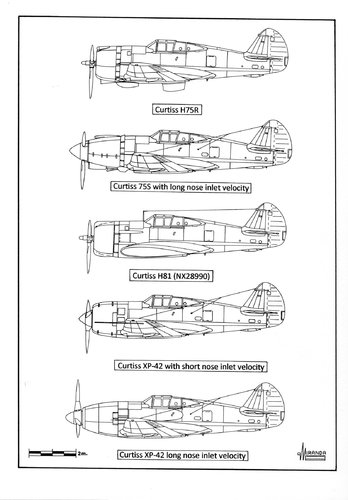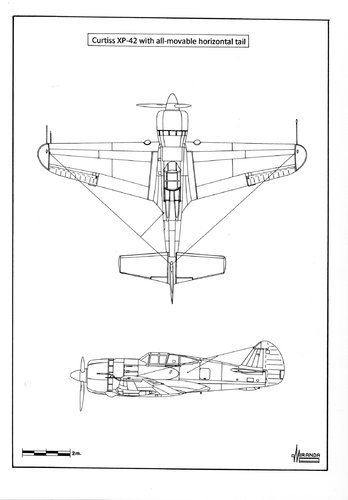Aircraft manufacturers competed for the few in-line available engines in 1939. With the potentially deteriorating situation that a long war could create, some aerodynamic essays were performed to reduce the radial engines drag in Germany, Belgium and the USA. The Renard R-37 was introduced to the public in July 1939 as an emergency solution, in face of the prospect that France and the United Kingdom might cancel the exports of the Hispano-Suiza and Merlin in-line engines. The R-37 was propelled by a large Gnome-Rhône radial engine of 1,100 hp with a large propeller spinner which completely covered the engine front air intake.
In Germany, the Focke-Wulf Company had the same problem after realising that the whole production of Daimler Benz in-line engines had been assigned to Messerschmitt. The design team of Kurt Tank was impelled to use the BMW radial engine for the new Fw 190 fighter, a prototype of which flew in June 1939 with an extremely aerodynamic cowling and a large ducted spinner to reduce drag.
In USA the NACA published a report at the beginning of 1939 about the methods to improve the volume of cooling air flowing over radial engines. In February 1939, Seversky performed the first flight tests with the NX2597 AP-4 Lancer prototype, equipped with ducted and non-ducted large propeller spinners. In March, Curtiss decided to experiment with the new technology transforming the P-36A s/n 38-004 into the XP-42 prototype by adding a large propeller spinner and extension shaft and one air intake placed under the R-1830-31 engine, the prototype suffered serious problems of vibrations.
In May 1940, the Japanese flight tested the third prototype of the Kawasaki Ki.45 with a spinner that was almost identical to that of the Fw 190 V1. The NX21755 c/n 142 Vultee 48 fighter flew for the first time in September with an equipment similar to that of the Curtiss XP-42.
By mid 1939 the Northrop Company tested the A-17A s/n 36-184 bomber with ducted and non-ducted large propeller spinners and several nose and side mounted blowers configurations. In United Kingdom, the Hawker Company performed several late experiments by the beginning of 1945, modifying the Tempest Mk.V NV768 with several types of ducted spinners.
As a result of all this research, however, there was not any significant aerodynamic achievement. The R-37 was captured by the Germans before starting its flight tests and the Fw 190 V1, the Curtiss XP-42, the Vultee 48, the Kawasaki Ki.45-03 and the Seversky Lancer all encountered insurmountable cooling problems and had to be refitted with conventional cowlings. The A-17 A was turned back to its original configuration and back to operations.
Curtiss XP-42 technical data
Wingspan: 37.3 ft (11.37 m), length: 29.5 ft (8.99 m), height: 10 ft (3.05 m), wing area: 235 sq.ft (21.83 sq.m), max speed: 314 mph (506 kph), max weight: 6,259 lbs (2,839 kg), service ceiling: 31,000 ft (9,450 m).
In Germany, the Focke-Wulf Company had the same problem after realising that the whole production of Daimler Benz in-line engines had been assigned to Messerschmitt. The design team of Kurt Tank was impelled to use the BMW radial engine for the new Fw 190 fighter, a prototype of which flew in June 1939 with an extremely aerodynamic cowling and a large ducted spinner to reduce drag.
In USA the NACA published a report at the beginning of 1939 about the methods to improve the volume of cooling air flowing over radial engines. In February 1939, Seversky performed the first flight tests with the NX2597 AP-4 Lancer prototype, equipped with ducted and non-ducted large propeller spinners. In March, Curtiss decided to experiment with the new technology transforming the P-36A s/n 38-004 into the XP-42 prototype by adding a large propeller spinner and extension shaft and one air intake placed under the R-1830-31 engine, the prototype suffered serious problems of vibrations.
In May 1940, the Japanese flight tested the third prototype of the Kawasaki Ki.45 with a spinner that was almost identical to that of the Fw 190 V1. The NX21755 c/n 142 Vultee 48 fighter flew for the first time in September with an equipment similar to that of the Curtiss XP-42.
By mid 1939 the Northrop Company tested the A-17A s/n 36-184 bomber with ducted and non-ducted large propeller spinners and several nose and side mounted blowers configurations. In United Kingdom, the Hawker Company performed several late experiments by the beginning of 1945, modifying the Tempest Mk.V NV768 with several types of ducted spinners.
As a result of all this research, however, there was not any significant aerodynamic achievement. The R-37 was captured by the Germans before starting its flight tests and the Fw 190 V1, the Curtiss XP-42, the Vultee 48, the Kawasaki Ki.45-03 and the Seversky Lancer all encountered insurmountable cooling problems and had to be refitted with conventional cowlings. The A-17 A was turned back to its original configuration and back to operations.
Curtiss XP-42 technical data
Wingspan: 37.3 ft (11.37 m), length: 29.5 ft (8.99 m), height: 10 ft (3.05 m), wing area: 235 sq.ft (21.83 sq.m), max speed: 314 mph (506 kph), max weight: 6,259 lbs (2,839 kg), service ceiling: 31,000 ft (9,450 m).


